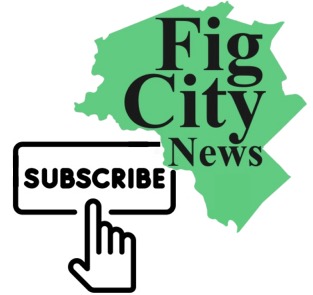Two centuries ago, Louis Braille invented “a system of raised dots that can be read with the fingers by people who are blind or who have low vision,” according to the American Foundation for the Blind. On Saturday, visitors to the Newton Free Library were able to see – and feel – the words and letters for themselves in honor of the 200th anniversary.
Understanding Our Differences (UOD), a Newton nonprofit that “uses a hands-on, participatory disability awareness curriculum to foster respect, acceptance, and inclusion for people of all abilities,” brought several Braille activities to the Library’s children’s event space so families could learn more.
“We want to demystify a person with a disability,” said Joe Quintanilla, co-president of UOD. Standing at one of the activity tables, he swiftly used a Perkins Brailler, which functions like a typewriter, to create the three-dimensional letters.
“It’s really interesting how you feel it and know what the word says,” said Yaara, age 9, an attendee whose mother asked that her last name not be used. As she held a piece of paper with her name typed in Braille, she said that she had seen dots on signs at her school but had not known what they were at the time.
At other tables, children were able to create their own map using materials with different textures; play with toys and games that had extra tactile elements; and flip through the Braille versions of popular picture books, including ones by Dr. Seuss and Eric Carle, among others.
“They know the books and they’re curious to see how Braille works,” said volunteer Rachel McIntyre.
Some books had clear overlays with the story told in Braille, while in others the letters were punched into the pages themselves. Sometimes materials were added so that readers with low vision or who are blind could feel each illustration.
Quintanilla, who attended Boston College, has worked at Newton’s Carroll Center for the Blind, and currently works at the National Braille Press, said when he visited schools in the past, he found that children “are amazed” to learn there are different ways of reading.
UOD had a 45-year relationship with the Newton Public Schools (NPS), through the 2022-2023 academic year, said Rebecca Lubens, the organization’s executive director.
However, she said that ahead of this academic year, UOD officials were told that “NPS decided to go in a different direction … and create its own curriculum.”
Prior to that decision, Quintanilla said he had visited every school in the district. During the nonprofit’s school programs, students would participate in classroom activities about low vision and blindness; hear from a guest speaker; and have a frank question-and-answer session with the guest.
During the sessions, and at the library event, Quintanilla said children learned that people with low vision or who are blind use strategies and senses other than sight (i.e. ,Braille and touch) to read.
As multiple families circulated through the activities, Lubens said that UOD decided to hold the free library program, “to give back to the community and continue educating children and families.”
















